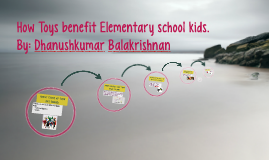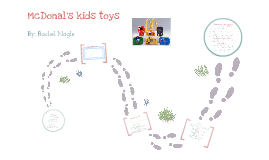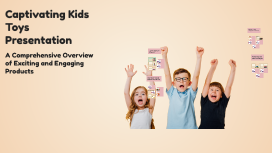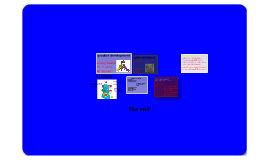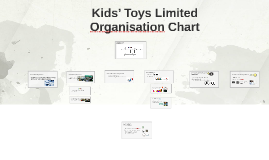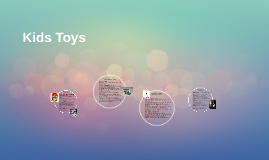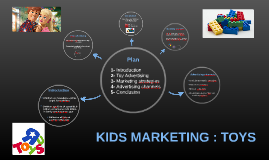Captivating Kids Toys Presentation
Transcript: Captivating Kids Toys Presentation Diverse Product Categories in Kids Toys Creative Playsets Educational Toys Creative playsets foster imaginative play, allowing children to role-play and create scenarios. Sets like dollhouses, kitchens, and action playsets encourage storytelling and social interaction, vital for emotional development. Educational toys promote cognitive development and problem-solving skills. Examples include building sets, puzzles, and STEM-related kits that enhance learning through play, encouraging curiosity and creativity in young minds. Outdoor and Sports Toys Action Figures and Dolls Outdoor and sports toys encourage physical activity and teamwork. Items like bicycles, skateboards, and sports balls facilitate exercise and skill-building, promoting a healthy lifestyle and social interaction. Action figures and dolls stimulate imaginative play and storytelling. They allow children to create narratives and develop social skills through role-playing, enhancing their emotional intelligence and creativity. Electronic and Interactive Toys Electronic and interactive toys engage children through technology, providing a blend of learning and fun. Popular examples include tablets for kids and robotic toys that teach programming basics, catering to tech-savvy young learners. The World of Kids Toys: A Foundation for Fun and Learning Marketing and Sales Strategies Importance of Play in Child Development Play is critical for cognitive, emotional, and social development in children. It enhances skills such as problem-solving, creativity, and teamwork while providing a joyful and interactive learning environment. Safety Standards and Compliance Safety is paramount in toy manufacturing, with regulations ensuring materials are non-toxic and designs prevent choking hazards. Compliance with ASTM and CPSC standards safeguards child safety during play. Overview of Current Market Trends A Comprehensive Overview of Exciting and Engaging Products The global toy market is projected to reach over $120 billion by 2023, driven by trends in tech integration, eco-conscious products, and the demand for educational toys that foster learning through play. Effective Advertising Channels Identifying Target Audience Target Age Groups Utilizing optimal advertising channels is vital for reaching potential customers. Television, social media, and influencer partnerships are key platforms for engaging both children and their parents. Understanding the target audience is crucial for effective marketing. For kids toys, this includes parents, caregivers, and gift purchasers, as well as considerations of age-appropriate interests and developmental stages. Toys are tailored for specific age groups to support development stages. Understanding developmental milestones ensures toys are age-appropriate, promoting safe and engaging play experiences for children. Diversity in Toy Categories Toys encompass a wide range including educational, outdoor, creative, and electronic options. Each category serves different developmental purposes, catering to various interests and learning styles. Pricing Strategies Promotional Campaigns Pricing strategies must reflect both the quality of toys and market demand. Competitive pricing paired with perceived value influences purchasing decisions among parents and gift buyers. Promotional campaigns that highlight product features and benefits can significantly drive sales. Engaging campaigns during holidays and back-to-school seasons create urgency for buyers. Retail and Online Selling Platforms A strong presence in both retail and online platforms ensures broad accessibility for consumers. Collaborating with major retailers and optimizing e-commerce sites can capture diverse purchasing preferences. Innovative Product Features in Kids Toys Interactive Technology Integration Toys now include sensors, apps, and AR technology, creating immersive play experiences that promote learning and interaction. This approach not only captures attention but also caters to the digital natives of today. Multi-Purpose Functionality Eco-Friendly Materials Toys that serve multiple functions encourage creativity and extend playtime. For instance, building sets that transform into vehicles or figurines stimulate imagination while offering practical benefits. A shift towards sustainable materials like recycled plastics and organic fabrics is prominent in modern toy production. This trend not only helps reduce environmental impact but also appeals to eco-conscious parents. Engaging Design Aesthetics Eye-catching designs and vibrant colors attract children's attention and stimulate creativity. Thoughtful aesthetics, including textures and shapes, enhance sensory experiences during play. Customization Options Many brands now offer customizable toys, allowing children to select colors, designs, and features. Personalization enhances emotional attachment, thereby increasing a toy's value and appeal.






